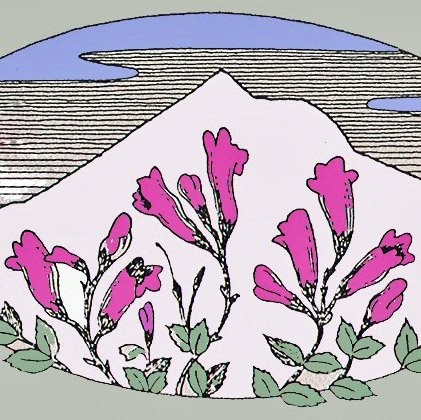Alpine soil amendments from the Habitat to Home Garden, Cultivating Mountain plants form around the world. By Mark Akimoff of Illahe Rare Plants
- Cascade Minerals re-mineralizing soil booster-Great source of Ca, Mg and Iron crushed basalt native to our cascade mountains. Excellent for adding minerals to alpine/rock garden soils without adding nitrogen. Also good for veg gardens as it boosts the biome of beneficial bacteria that feed the soil web.
- Glauconite/Jersey greensand-Great source of Potassium, Iron and lots of trace micronutrients, Holds more moisture than sand and also does a great job of breaking the ionic bonds in sticky clay soils to create a more friable texture and unlock bound nutrients. I add this to sand planting beds to add nutrients and it works really well for plants from ultramafic soil sources such as the serpentine soils of the Siskiyous.
- Akadama-A hard volcanic clay product with lots of micronutrients often used in Bonsai. It is more costly than alternative soil components, such as Scoria, Pumice or Perlite, but it is prized by many growers for its ability to retain water and nutrients while still providing porosity and free drainage. Which are critical for growing some of the especially tough Chasmophytes like Dionysia.
- Akadama subsititutes: Turface and Fullers earth (fired in a kiln), like Oil-sorb available at tractor supply, these are lower cost alternatives, however you should do a test to see if they are suitable for alpine/rock garden soils by filling a plastic cup with samples and then soaking them in water for 48 hours, and also a sample that you freeze for 48 hours after this time allow the clay to drain and then try to crush it between your fingers, if it makes a slimy goo then you should not use it for potting soil and use it can be used for oil spill/kat litter. If it retains it’s shape and structure it is suitable for potting soil.
- Azomite-is a rhyolitic tuff breccia, which is a hard rock formation that formed from the dust of a volcano that erupted 30 million years ago, a highly mineralized complex silica ore (Hydrated Sodium Calcium Aluminosilicate or HSCAS), it is mined in Utah from the ancient deposit, it contains many micronutrients and works particularly well for growing plants that grow well on Tuffa. I like the prilled form of it that is somewhat pelletized as it is slow release and doesn’t clog the potting soil as easily as rock flours and glacial rock dust can sometimes do.
- Mycorrhizae inoculant-there are many great products out on the market today, what to look for in rock garden/alpine specific mycorrhizae are products containing a diverse assortment of AMF (arbuscular mycorrhizae Fungus) with the Genus glomus, Claroideoglomus, Gigasporaceae, Diversisporaceae, and Ambisporaceae being the most common in Alpine soils. I use a Mycoapply soluble maxx which has 9 species of Endomycorrhizae including
Glomus intraradices, Glomus mosseae, Glomus aggregatum, Glomus etunicatum, Glomus deserticola, Glomus clarum, Glomus monosporum, Paraglomus brasilianum, Gigaspora margarita etc.
